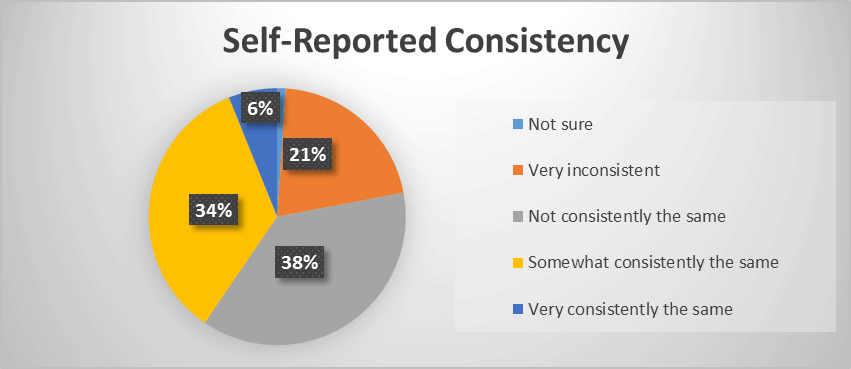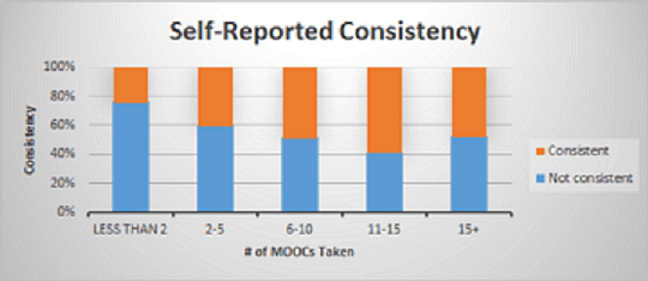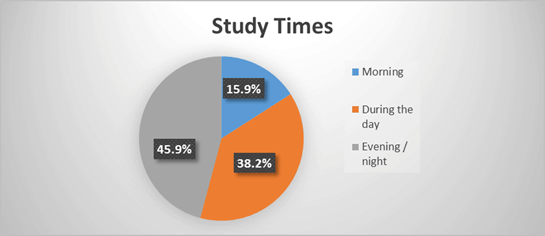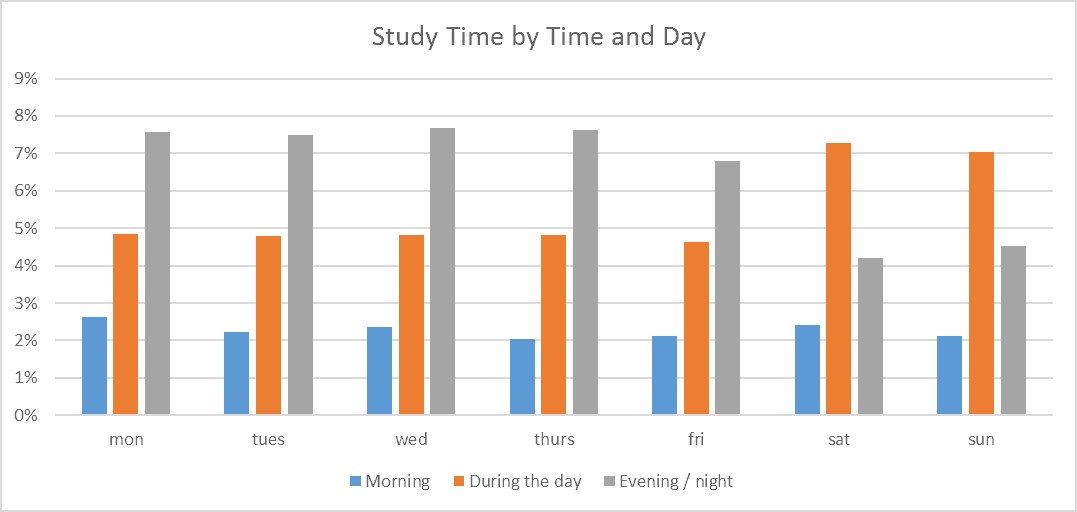MOOC-Takers Practice Flexibility: Class Central Survey Results
Class Central’s report of original research on when MOOC takers study, from a survey of 4,500 respondents.
One of the advantages of taking MOOCs is that learners can work on them at any time. But when do they actually work on them? That is the question we wanted to address in Class Central’s inaugural 90-Second Survey. We sent a quick survey out to Class Central users, and also got a big boost in responses thanks to Prof. Barbara Oakley, who passed on our solicitation to her Learning How to Learn students (thanks Barb!). Below are highlights of the results.
Methodological note: we created a 5-question survey in Google Forms, and it was fielded from June 1 to June 8, 2015. Analysis was performed with 4,506 responses. Of the responses, 4,372 respondents indicated that they had taken at least one MOOC, and comprise the universe for the following analysis.
Time Spent on MOOCs
First we asked how many MOOCs respondents had taken, whether they completed them or not. As you can see below, approximately half (50.1%) indicated that they had taken between 2-5 MOOCs. Thus, in most cases, responses represent behavior across multiple MOOCs.
A basic question we want to know is how much time people spend on MOOCs. Over half (58.3%) report spending between 2-5 hours per week, more than a fifth (22.1%) report spending 6-10 hours per week, and 14.9% report spending less than 2 hours per week. What should we compare this to? According to the Bureau of Labor Statistics, Americans spent an average of 2.8 hours per day watching tv in 2014. But this represented half of their leisure time. Another number to compare against is a standard 40-hour work week: 2 hours is 5% of of that, and in the survey 85% of respondents reported spending at least 2 hours per week. If people are spending 5%, 10%, 15%, or more studying/learning vs. working, that is not insignificant
An important thing to note is that these are self-reported perceptions–as you know our sense of time is quite imperfect. Thus there is a major bias, and these numbers can be way off from reality, but note that perceived effort is also important…if something feels like it takes 4 hours per week, then people are making conscious choices to give up other things to that extent.
Now let’s get into the interesting things we found regarding consistency.
Consistency of Time Spent
When asked how consistent they felt they were in when they spent time on MOOCs, only 6.1% felt that they were very consistent. And a third (34.3%) felt they were very somewhat consistent–this leaves the rest: fully 58.5% felt that they were not consistent or very inconsistent in when they studied.
But now we can pose an interesting hypothesis: perhaps it is those who spend more time on MOOCs who are more consistent in their study times because they need to be more organized and structured in order to fit in the time? Yes, we can see this effect, though its not huge:
As you can see, 24% of those who report spending less than 2 hours/week think they are consistent, while more than 40% of those who spend more than that do. And the highest is the 11-15 hour group, of whom 59% think they are consistent. Thus, to fit in more study time, people need to be more disciplined–that is as expected. But when exactly do they study?
Days/Times of Study
Again, we have good amount of diversity here–15.9% of the times indicated were in the morning, 38.2% during the day, and 45.9% during the evening. Certainly there is a blend of many different categories of people–some, like students, retired persons, those not working full-time may be doing much of their studying during the day, while those with 9-5 jobs may be doing so in the evening.
But let’s not forget the weekend! As you can see below, it is during the weekends that daytime studying dominates, while during the weeknights, evening dominates. However, it is interesting that work on MOOCs is spread so evenly across the week. There are a number of reasons why we might have hypothesized otherwise: most MOOCs have a weekly cadence with assignments and quizzes due on Saturday or Sunday, so we might have expected a lot of last minute work on the weekend. And we might have expected a slower start to the week as people might naturally procrastinate–but Monday had its fair share of MOOC work. People really are taking advantage of being able to work on MOOCs anytime by working on them at any given time.
This concludes most of the data analysis we were able to conduct based on our first 90-second survey. Hopefully, we will conduct many more surveys in the future and glean insights from them.
Conclusions
So what do we make of these results? A few points in summary:
• Respondent MOOC-takers were generally multiple MOOC-takers, 50.1% reported having taken 2-5 MOOCs. Thus, the respondents who tried MOOCs felt there was value enough to continue taking MOOCs
• 85% of the respondents reported spending more than 2 hours per week on MOOCs (with 26.8% indicating they spent more than 5 hours per week). This represents a significant perceived (whether or not actual) level of effort relative to working or leisure activities, and surely represents a conscious sacrifice of other activities
• Only a third of respondents felt they worked on MOOCs consistently, and 79.1% indicated they were inconsistent in when they worked on them. A deeper look at this revealed that respondents who spent more time working on MOOCs tended to report being more consistent on how they spent time with them. This suggests that people who want to spend a significant amount of time learning in MOOCs need to be more structured in how they fit them into their life schedules.
• In terms of when people studied, it was spread fairly evenly across days of the week, mostly during the evening during weekdays and daytime during weekends.
When considering these findings it is important to note that there are biases in these collected data: this may not be a completely representative sample of MOOC takers (as it includes many of Barbara Oakley’s excellent, motivated students!), there may be some self-selection in who took the survey, and these are all self-reported data. Thus these data are the exact opposite of the promise of automated behavioral data that online learning platforms provide (e.g. see this HarvardX and MITx two-year report). However, despite the promising insights that can be developed from those behavioral data, they are not perfect (e.g. how much time spent ‘in the session’ was focused on checking Facebook in another browser tab?). Also, it is still important to capture peoples’ perceptions–they do matter, after all, perceptions are directly tied to motivation. Thus, we should use multiple methods and sources to form the best picture we can of these new online learning methods, how people are using them, what they think of them, and how they can be improved.










ZHOLDYBAY
One of the advantages of taking MOOCs is that learners can work on them at any time.
I really liked it.